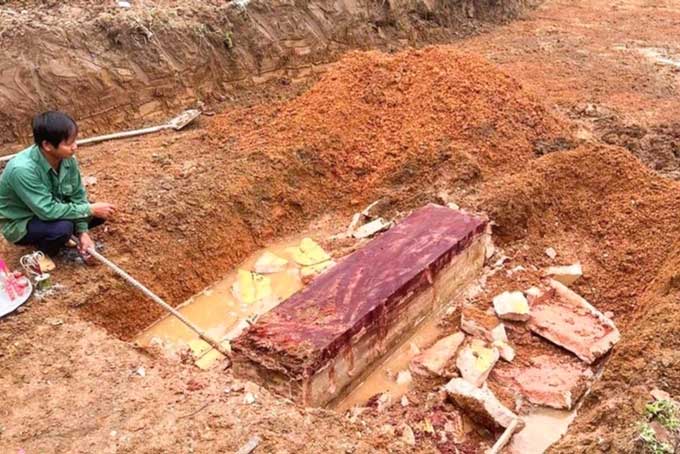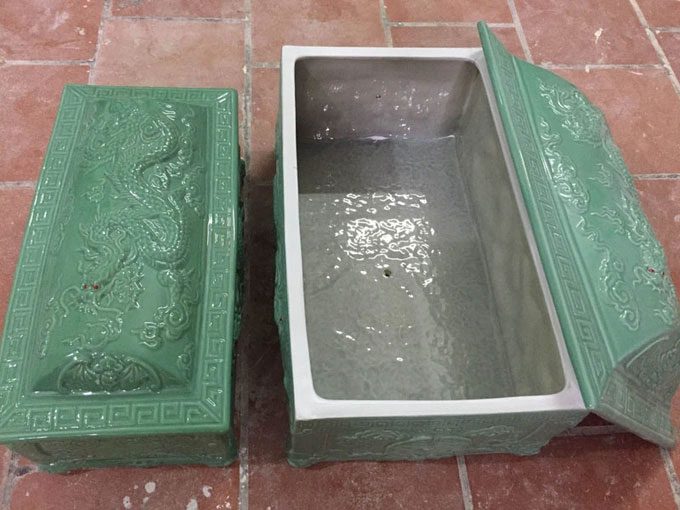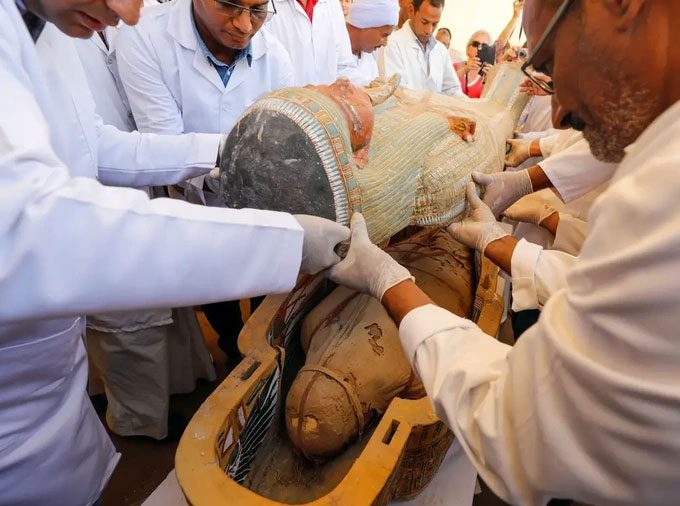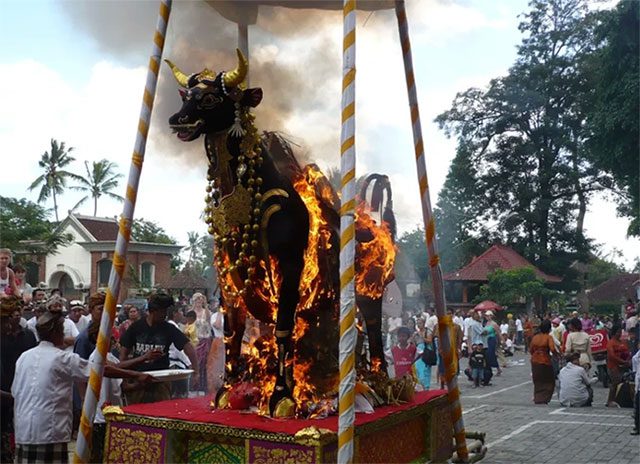The coffin has long been regarded by the public as the final home for the deceased. Therefore, a coffin is sometimes designed and intricately carved in beautiful ways.
Recently, residents in Hùng Tiến commune, Nam Đàn district, Nghệ An province discovered a peculiar coffin. This object is approximately 2.4 meters long, 0.8 meters high, and weighs about 500 kilograms.
After the residents broke away the thick hard layer resembling stone on the outside, a dark red wooden coffin was revealed. The coffin is nearly intact and very heavy, requiring six people to lift it. The locals believe this is a traditional burial style of “inside coffin, outside tomb” from ancient times.
Across the world, different cultures have various styles of coffins and burial practices. Notably, in Vietnam, there is a distinctive burial style known as “inside coffin, outside tomb”.
“Inside Coffin, Outside Tomb”: What Are Coffin and Tomb?

The coffin buried in the “inside coffin, outside tomb” style found in Nam Đàn, Nghệ An, estimated to be over 100 years old. (Photo: Việt Cường/NTV).
Many believe that a coffin serves as a home for the deceased. It is just as important as the home they lived in: it must be beautiful, aesthetically pleasing, and durable. There is also a belief that the coffin acts like a garment that envelops the deceased.
Based on this ideology, “outside tomb” is seen as the outer layer that protects the deceased, shielding the bones from damp environments, pests, and insects…
Thus, the tomb is often made from materials that are highly durable, robust against various external forces, and resistant to the chemical and physical agents present in the soil.
In Vietnam, tomb materials commonly used include cement, ceramics, Ngọc Am wood, Pơ Mu wood, and Vàng Tâm wood… Among these, Ngọc Am wood (scientific name: Cupressus funebrus) is the best due to its very dense, hard texture, waterproof capabilities, and resistance to warping, although it is quite rare.

The smaller inner coffin placed inside the tomb. (Photo: Collected).
“Inside coffin” refers to the smaller inner coffin. This inner coffin is smaller than the outer tomb and is placed inside to hold the bones of the deceased. If the tomb is viewed as the outer garment, the inner coffin is considered the inner layer, directly covering the bones.
There are many types of inner coffins: ceramic, porcelain, wooden… In popular belief, people often use high-quality porcelain inner coffins. This is because porcelain is made from earth. In spiritual understanding, since humans are born from the earth, their bones should also be laid to rest in the earth.
Both the outside and inside of the inner coffin are usually coated with a layer of glaze, helping to prevent chipping, fading, and reducing the sharpness of the patterns.
Strange Burial Practices Around the World
As mentioned, each culture worldwide has different beliefs about death and burial practices for the deceased.

Archaeologists opening the lid of an ancient coffin discovered at the Al-Asasif cemetery, located in the Valley of the Kings in Luxor, Egypt (Photo: Reuters).
Perhaps the most famous are the ancient Egyptians, who invented a unique mummification process that is equally… eerie. This involved removing all internal organs, including the brain, heart, and liver… The body was then stuffed with dry materials like sawdust and wrapped in linen.
Afterward, they were placed inside a coffin carved in human form. The Egyptian belief held that mummification served to preserve the soul for its journey to the afterlife.
In contrast to somber funerals, the cremation ceremonies of Hindus in Bali resemble a vibrant costume festival. The deceased are placed inside a coffin shaped like an animal such as a tiger, cow, or fish… or a mythical creature. The entire coffin is then set ablaze in front of attendees.
Participants believe that cremation releases the soul of the deceased, allowing them to begin the next cycle of life.

The cow-shaped coffin in Bali. (Photo: Kibitan).
Medieval Vikings had an entirely different approach. They literally lived and died at sea. After death, Vikings were placed on ships filled with food, jewelry, weapons… to ensure their comfort in the afterlife. These ships were then set ablaze or allowed to drift away.
Some indigenous tribes in Australia, Columbia, and Siberia have the tradition of burying the dead in trees. They wrap the deceased in a shroud, place them in a basket, and then hang them in trees to allow for natural decomposition.
Followers of Zoroastrianism believe that the human body is impure and should not pollute the earth after death through burial or cremation.
The deceased are taken to a quiet area, often situated on high mountains. Once the body has dried and been bleached by sunlight, it is collected and dissolved in lime.





















































